This message goes out to all bug enthusiasts, lovers of insects, and those intrigued by critters. Insects, even though they’re regularly tiny, can occasionally deliver a hefty sting. Amongst the many millions of diverse species such as bees, ants, hornets, and more, only a handful are part of the exclusive group recognized for having the most agonizing stings. This coveted distinction is what forms the elite bug club.
To accurately convey the pain level for our insect friends we’ll be looking at the 4-point Schmidt Sting Pain Index, created by famous entomologist Justin Schmidt who has been stung and bitten by just about every insect under the sun. What a madman.
So for all you bug fans, let’s take a look at the 25 Most Painful Insect Stings In the World.
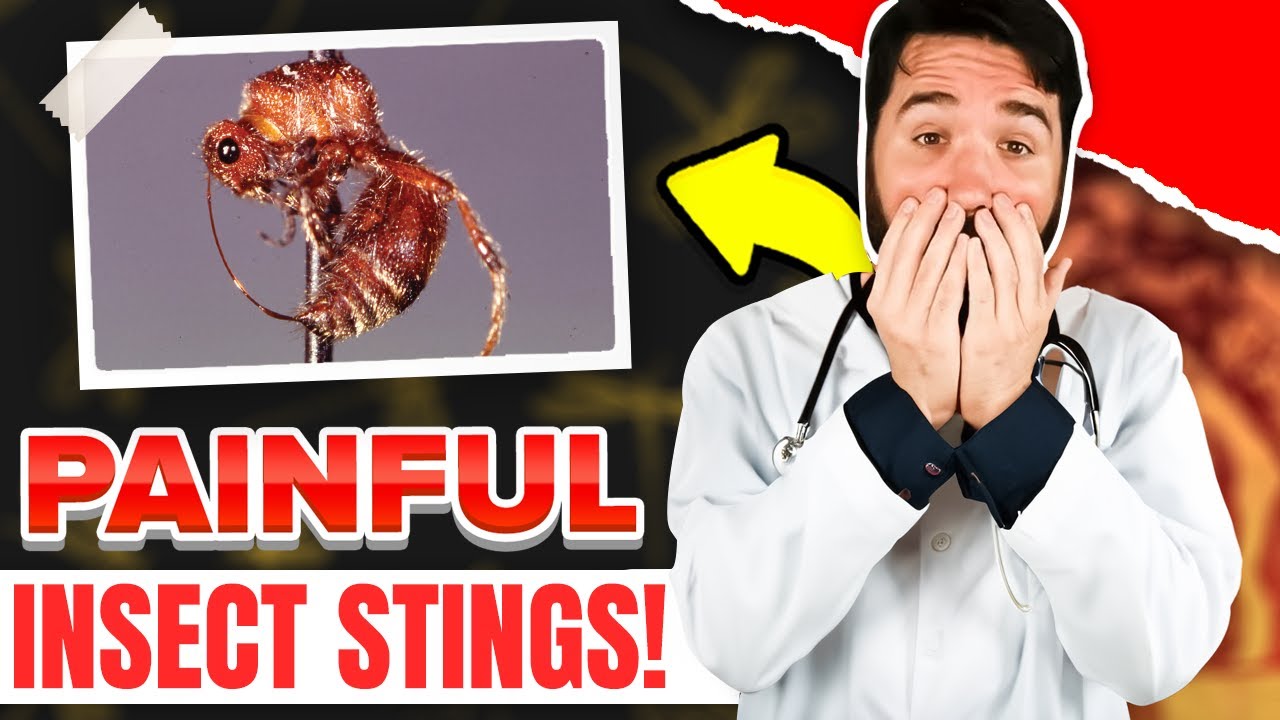
Most Small Bees
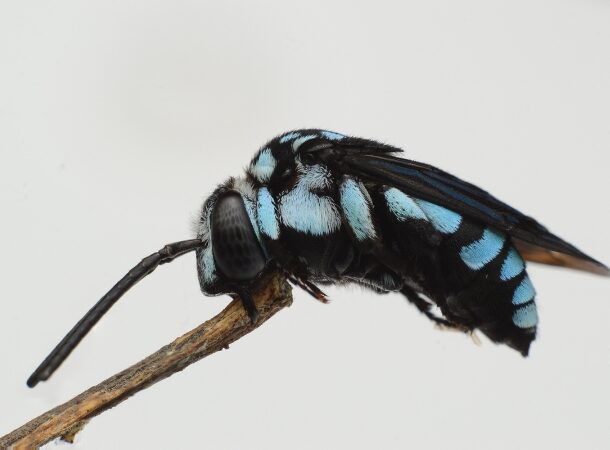 https://www.atlasobscura.com/articles/the-colorful-pain-index-of-the-stinging-ants-bees-and-wasps-around-the-world
https://www.atlasobscura.com/articles/the-colorful-pain-index-of-the-stinging-ants-bees-and-wasps-around-the-world We’ll start it off easy. Most small bees like sweat bees, carpenter bees, and many others score a 1 on the Schmidt Pain Index Scale. Justin Schmidt has described the sting of these bees as “a small spark that singed one of your arm hairs” and like a “light sunburn after a day at the beach.”
There are plenty of bees that fall into this category and their stings are all fairly comparable in terms of pain.
Indian Jumping Ant
 https://www.npr.org/2021/04/18/988262580/the-incredible-shrinking-and-growing-brains-of-indian-jumping-ants
https://www.npr.org/2021/04/18/988262580/the-incredible-shrinking-and-growing-brains-of-indian-jumping-ants The Indian Jumping Ant is only a 1 on the Schmidt Pain Index, but despite the small pain, they do actually have a surprising talent.
No, it’s not jumping, but they can do that too. The Indian Jumping Ant can actually shrink and grow its own brain. They shrink their brain when breeding and they then regrow their brain after a few days. Justin Schmidt compares the sting they give to a particularly bitter cup of coffee. Okay, Justin. Okay.
Mexican Twig Ant
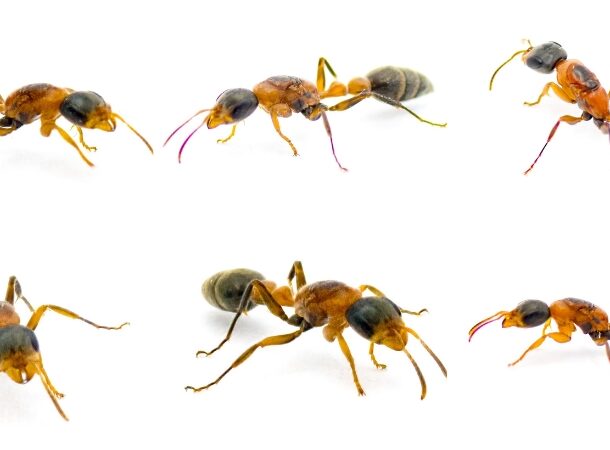 http://lepcurious.blogspot.com/2015/08/mexican-elongate-twig-ant.html#:~:text=The%20bite%20and%20venom%20combination,stings%20of%20other%20garden%20insects
http://lepcurious.blogspot.com/2015/08/mexican-elongate-twig-ant.html#:~:text=The%20bite%20and%20venom%20combination,stings%20of%20other%20garden%20insects The Mexican Twig Ant can be found in Mexico but it’s also fairly common in the southeast of the United States. They make their homes in the abandoned burrows that other insects have made in branches, trees, or pretty much anything made of wood.
They can commonly get into people’s clothes and they will repeatedly sting whoever they’re on until they are removed. The venom they inject can make it feel like you’re being bitten repeatedly and the pain lasts longer than many other small ants. They score fairly low, also coming in at 1 on the Schmidt Pain Index.
Red Fire Ant
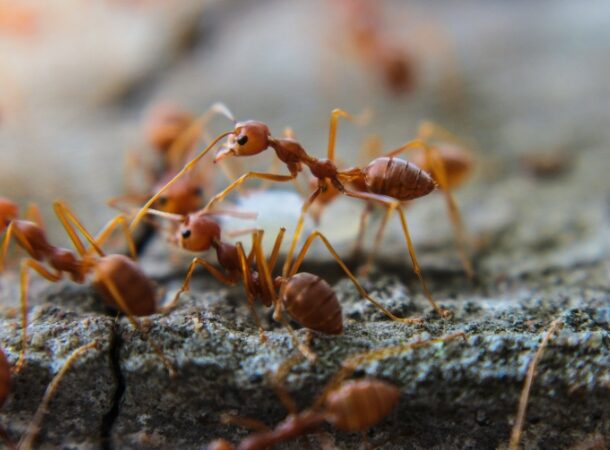 https://www.dailymail.co.uk/sciencetech/article-3764171/Like-chained-flow-active-volcano-Scientist-reveals-warrior-wasp-attack-worst-insect-world-stung-thousand-times-85-different-insects.html
https://www.dailymail.co.uk/sciencetech/article-3764171/Like-chained-flow-active-volcano-Scientist-reveals-warrior-wasp-attack-worst-insect-world-stung-thousand-times-85-different-insects.html The Red Fire is quite well known among many as they are very common in many parts of the world. Their sting is only scored as a 1 on the Schmidt Pain Index but their venom can be potent among anyone with certain allergies.
A sting from this insect will result in small, itchy lumps that last anywhere from 30 minutes to an hour. The sting eventually turns into small filled blisters and remains there for a few days.
Justin Schmidt described the fire ant’s sting as “Sharp, sudden, mildly alarming. Like walking across a shag carpet and reaching for the light switch.”
Western Cicada Killer
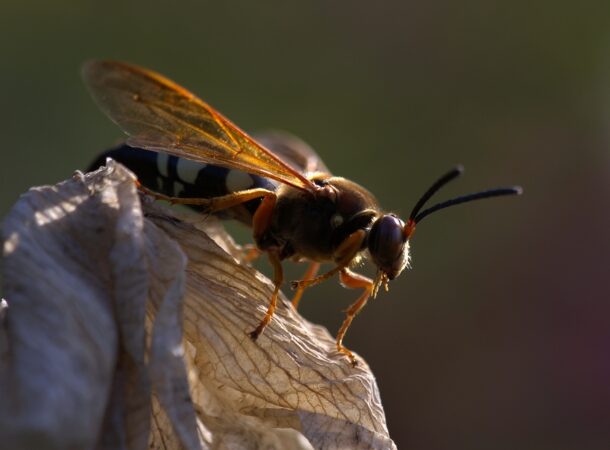 https://www.dailymail.co.uk/sciencetech/article-3764171/Like-chained-flow-active-volcano-Scientist-reveals-warrior-wasp-attack-worst-insect-world-stung-thousand-times-85-different-insects.html
https://www.dailymail.co.uk/sciencetech/article-3764171/Like-chained-flow-active-volcano-Scientist-reveals-warrior-wasp-attack-worst-insect-world-stung-thousand-times-85-different-insects.html The Western Cicada Killer is technically a wasp that is quite common in western parts of North America. The Cicada Killer is the largest wasp in all of California and they will often implant their eggs in cicadas that they paralyze. The eggs will hatch inside the cicada and eat it from the inside.
Despite their size, their intimidating look, and the horrifying way that they breed, their sting is actually quite tame, in fact, it only scores a 1.5 on the Schmidt Pain Index.
Western Honey-Bee
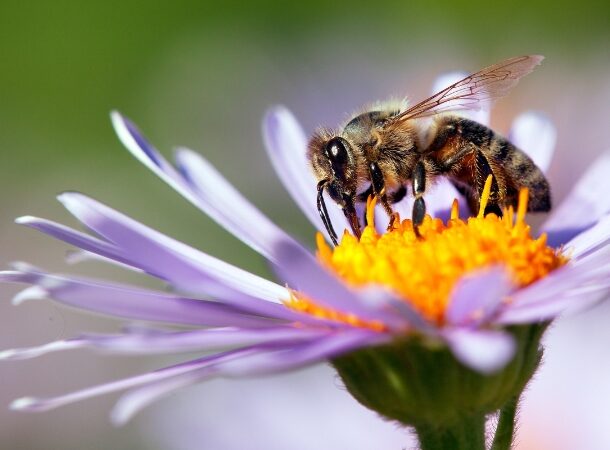 https://en.wikipedia.org/wiki/Western_honey_bee
https://en.wikipedia.org/wiki/Western_honey_bee This bee is the most common type of honeybee in Europe and is the bee we most commonly think of when we think of a honeybee.
The Western Honey Bee is the beginning of our insects that score a 2 on the Schmidt Pain Index. Justin Schmidt actually compares every sting to the sting of a Western Honey-bee to see where it ranks on the pain index. Honeybees are almost always non-violent and typically only sting as a last resort as their stinger is often removed along with their digestive system after stinging.
Sonoran Bumblebee
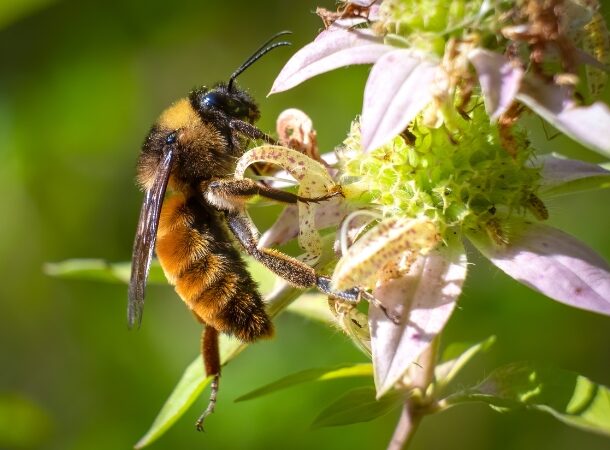 https://www.buzzaboutbees.net/do-bumble-bees-sting.html
https://www.buzzaboutbees.net/do-bumble-bees-sting.html The Sonoran Bumblebee is actually the most common bumblebee you’ll see in the United States. Much like its cousin the honey-bee, the Bumblebee also scores a 2 on the Schmidt Pain Index. Unlike most honeybees, the Bumblebee has a smooth stinger which means it can sting you multiple times should it so choose.
The Bumblebee isn’t aggressive at all, is a pollinator, and is by far the cutest insect on this list which means it wins the award for “Coolest Insect Ever.”
Yellow Jacket
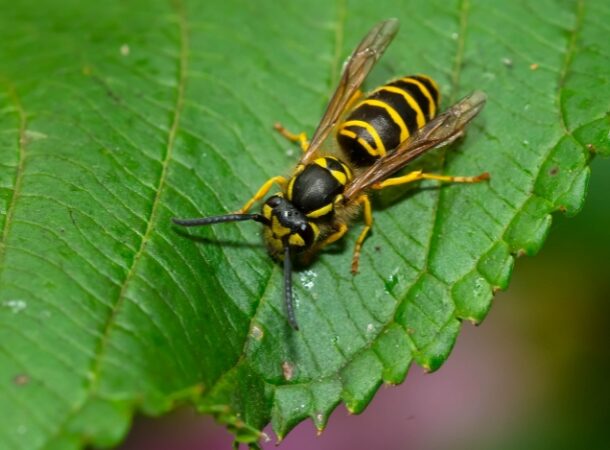 https://www.247pestcontrol.co.uk/blog/schmidt-sting-pain-index/
https://www.247pestcontrol.co.uk/blog/schmidt-sting-pain-index/ The Yellow Jacket is very common and they typically kill entire colonies of honey-bees. The Yellow Jacket only scores a 2 on the Schmidt Pain Index but is very aggressive. Yellow Jackets have been known to chase people and get aggravated when they are being swatted at.
Schmidt describes the pain by comparing it to having a cigar put out on your tongue. This pain can last for up to 10 minutes.
Matabele Ants
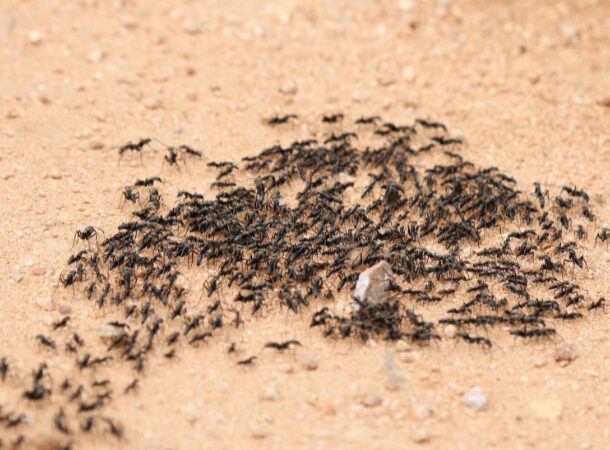 https://thesmallermajority.com/2013/02/12/african-tuesday-matabele-ants-of-gorongosa/#:~:text=They%20are%20named%20after%20a,for%20most%20of%20the%20day
https://thesmallermajority.com/2013/02/12/african-tuesday-matabele-ants-of-gorongosa/#:~:text=They%20are%20named%20after%20a,for%20most%20of%20the%20day The Matabele Ant is most commonly found in Africa. They score a 2 on the Schmidt Pain Index and can commonly be seen in a massive stream walking across the road. They have been known by the name termite-hunter ants because they will often travel in packs to destroy entire termite mounds.
Experiencing a Matabele Ant’s sting can leave you in pain for days if you happen to get stung multiple times. In fact, locals often stop their cars and wait for them to pass rather than drive over them and risk them getting in the car.
Mexican Honey Wasp
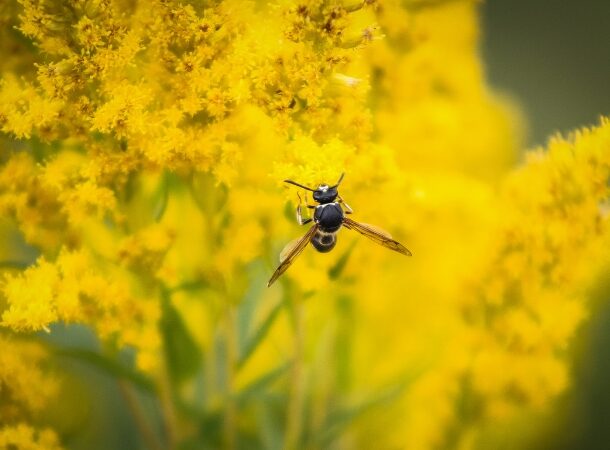 https://agrilifelearn.tamu.edu/s/product/mexican-honey-wasps/01t4x000004OUVQAA4\
https://agrilifelearn.tamu.edu/s/product/mexican-honey-wasps/01t4x000004OUVQAA4\ The Mexican Honey Wasp is a wasp that is smaller than the honey-bee but packs a very similar sting at 2 on the Schmidt Pain Index. They can sting multiple times but often won’t unless their nest is threatened. The Honey Wasp does produce honey much like honey-bees and the honey that can be collected is considered a delicacy in some parts of Mexico.
They even feed on harmful insects that kill greenery and flowers.
Artistic Wasp
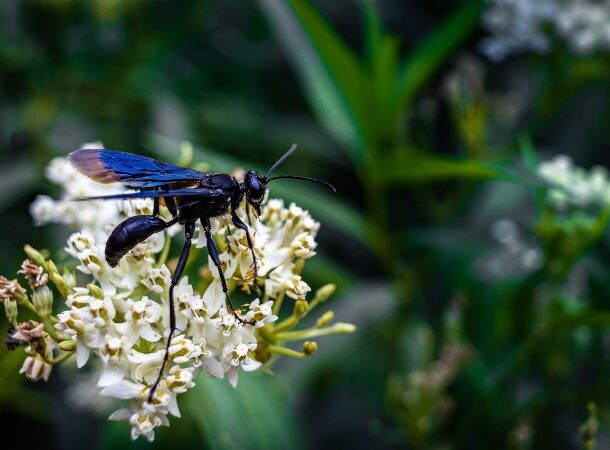 https://inaturalist.ca/taxa/712398-Parachartergus-fraternus
https://inaturalist.ca/taxa/712398-Parachartergus-fraternus The Artistic Wasp is ironically a wasp that is nearly all black. Its sting scores a 2 on the Schmidt Pain Scale and it can be quite aggressive. They spray venom into their own nest and just the smell of their venom alone deters predators and protects their nest.
Schmidt described the sting as “Pure, then messy, then corrosive.”
European Hornet
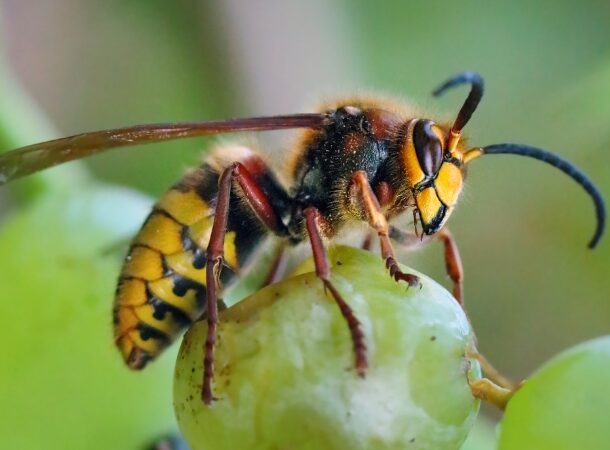 https://www.pestworld.org/pest-guide/stinging-insects/european-hornet/
https://www.pestworld.org/pest-guide/stinging-insects/european-hornet/ The European Hornet is actually a nocturnal hornet and can be known to fly up against people’s windows in the middle of the night. Its sting scored a 2 on the Pain Index Scale and like many other hornets can sting multiple times in a short period of time.
They hunt many other small insects including honey-bees and yellow jackets. They usually make their nests in trees and almost any exposed wood. They tend to stay close to farms and have been known to destroy crops.
Trap Jaw Ant
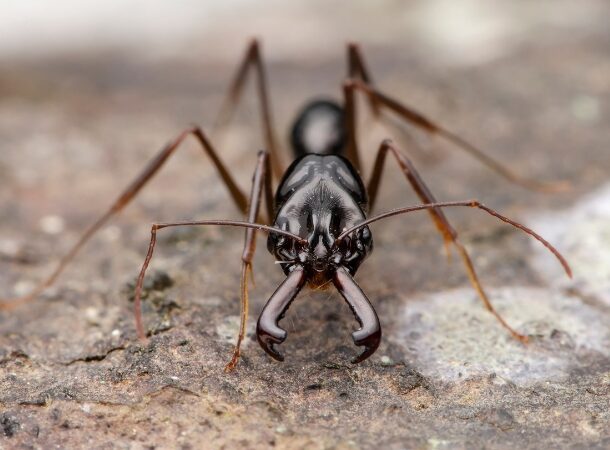 http://extension.msstate.edu/newsletters/bug%E2%80%99s-eye-view/2021/trap-jaw-ant-vol-7-no-27#:~:text=These%20big%20ants%20are%20quick,and%20can%20be%20used%20repeatedly
http://extension.msstate.edu/newsletters/bug%E2%80%99s-eye-view/2021/trap-jaw-ant-vol-7-no-27#:~:text=These%20big%20ants%20are%20quick,and%20can%20be%20used%20repeatedly The Trap Jaw Ant’s sting is just a little bit more painful than the honeybee’s sting but still remains in the 2-point range for the Schmidt Pain Index. Where they lack in pain they make up for in quantity, as these ants can sting multiple times. These ants are known for the massive mandibles they have open at all times and snap shut at incredible speeds.
Be glad you’re not small enough for them to trap you with their mandibles and then sting you repeatedly.
Hairy Panther Ant
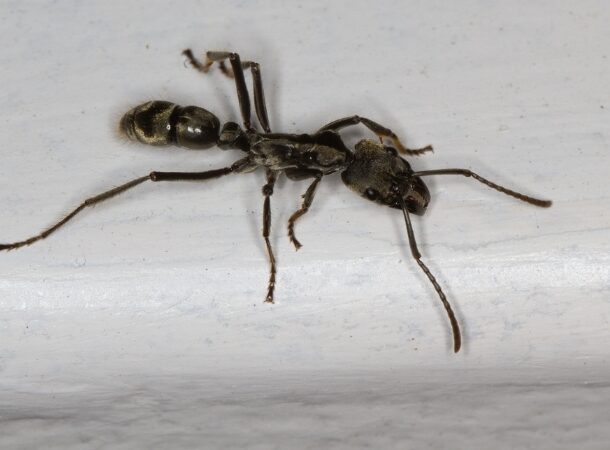 https://www.247pestcontrol.co.uk/blog/schmidt-sting-pain-index/
https://www.247pestcontrol.co.uk/blog/schmidt-sting-pain-index/ The Hairy Panther Ant is actually one of the largest ants in all of North America and gets its name because it’s covered in very fine hairs. The Hairy Panther Ants sting comes in at 2 points on the Schmidt Pain Index.
The actual sting consists of a burning sensation, similar to being on fire, for upwards of 10 minutes. They mostly eat termites which makes them useful for pest control but you should be wary about stepping on their home.
Bald-Faced Hornet
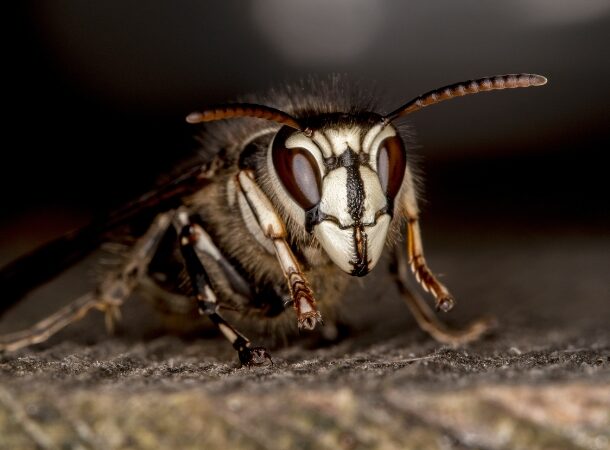 https://uspest.com/blog/insect-sting-index/#:~:text=Pain%20Level%202%20%E2%80%93%20Bald%2DFaced%20Hornet&text=Schmidt%20recounts%20their%20sting%20as,food%20on%20your%20dinner%20plate
https://uspest.com/blog/insect-sting-index/#:~:text=Pain%20Level%202%20%E2%80%93%20Bald%2DFaced%20Hornet&text=Schmidt%20recounts%20their%20sting%20as,food%20on%20your%20dinner%20plate The Bald-Faced Hornet scores a 2 on the Pain Index Scale and Justin Schmidt describes the sting as “rich, hearty, slightly crunchy. Similar to getting your hand mashed in a revolving door.” If we didn’t know any better we’d think he was describing a nice sandwich.
Bald-faced hornets typically only sting if you are within three feet of their nest. They actually feed primarily on flower nectar which makes them a pollinator and they kill typical pest insects so they’re quite beneficial. So if you find one of their nests you should probably just avoid them and leave them alone.
Asian Giant Hornet
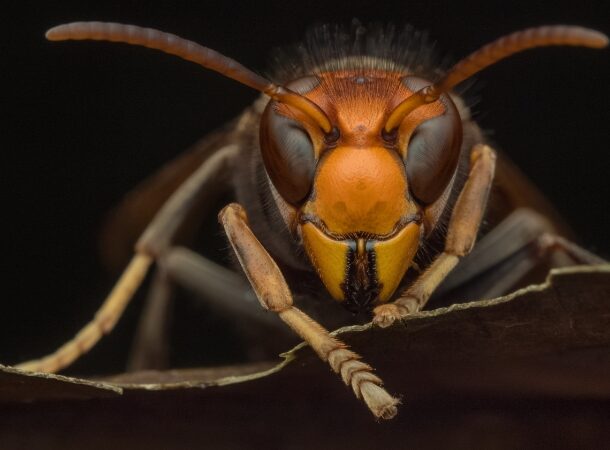 https://en.wikipedia.org/wiki/Asian_giant_hornet
https://en.wikipedia.org/wiki/Asian_giant_hornet The Asian Giant Hornet is more commonly known as the Murder Hornet. While it only scores a 2 on the Schmidt Pain Index, the venom that it injects through its stinger can be fatal, especially if it stings you multiple times.
They are called “giants” for a reason, as they are roughly the size of a human palm (dear god, I’m going to have nightmares) and they typically only sting humans when they are handled.
The Bull Ant
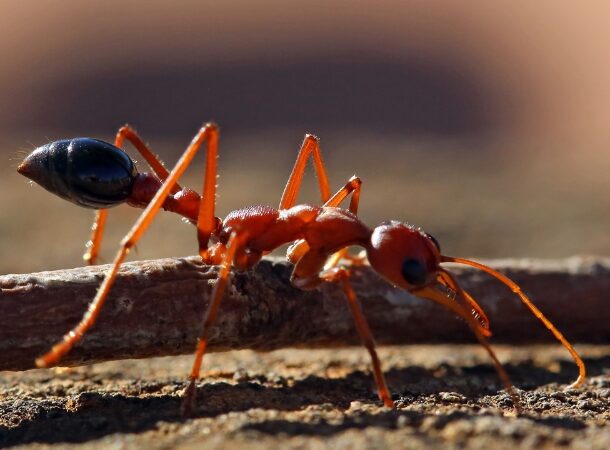 https://aepma.com.au/PestDetail/3/Bulldog
https://aepma.com.au/PestDetail/3/Bulldog The Bull Ant is most commonly found in Australia and is known for its very long and large mandibles. They are very large and typically have nests burrowed into the ground. They’re sting scores a 2 on the Schmidt Pain Index. Unlike most other ant colonies that have thousands of ants, Bull Ant colonies typically only have a few hundred at most.
The Bull Ant does have an aggressive nature and they’re sting has been known to put people into shock if they happen to be allergic and if left untreated the sting could wind up being fatal.
Fierce Black Polybia Wasp
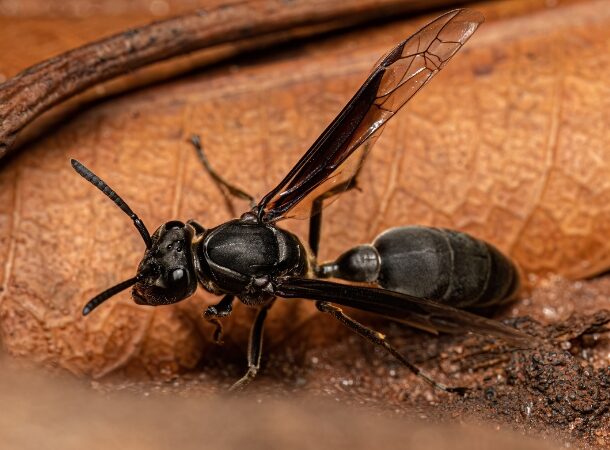 https://www.dailymail.co.uk/sciencetech/article-3764171/Like-chained-flow-active-volcano-Scientist-reveals-warrior-wasp-attack-worst-insect-world-stung-thousand-times-85-different-insects.html
https://www.dailymail.co.uk/sciencetech/article-3764171/Like-chained-flow-active-volcano-Scientist-reveals-warrior-wasp-attack-worst-insect-world-stung-thousand-times-85-different-insects.html The Fierce Black Polybia Wasp interestingly scores a 2.5 on the Schmidt Pain Index Scale. The sting is described as “A ritual gone wrong, satanic. The gas lamp in the old church explodes in your face when you light it.”
Somehow that doesn’t get this wasp to get into the 3-point club but it’s still more painful than the rest of the 2s.
They tend to nest near caterpillars and sting them to paralyze them. They then take the body of the caterpillar back to their nests to eat.
Metricus Paper Wasp
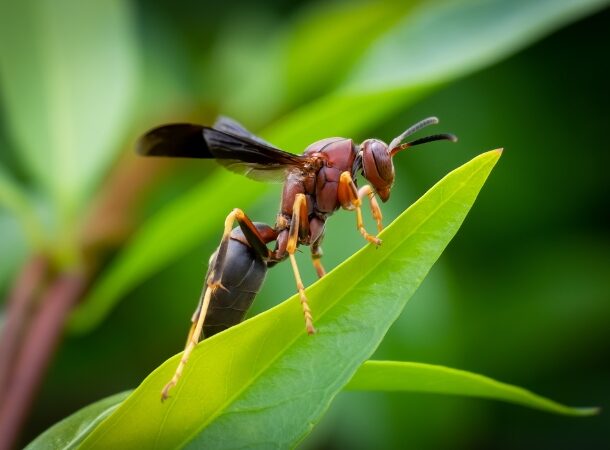 https://pictureinsect.com/wiki/Polistes_metricus.html#:~:text=Metricus%20Paper%20Wasp%20has%20a,will%20cause%20redness%20and%20swelling
https://pictureinsect.com/wiki/Polistes_metricus.html#:~:text=Metricus%20Paper%20Wasp%20has%20a,will%20cause%20redness%20and%20swelling The Metricus Paper Wasp marks the first time we come across an insect that scores a 3 out of 4 on the Schmidt Pain Index. It’s time for the big guns now.
The Metricus Paper Wasp is often found on farms and it acts as a natural predator to other pests that destroy crops. While their sting will find you with a swollen welt, they aren’t very aggressive at all and only sting when they feel threatened.
Unlike the next two, the Metricus Paper Wasp’s sting will only hurt for a minute before just becoming bothersome after that.
Harvester Ant
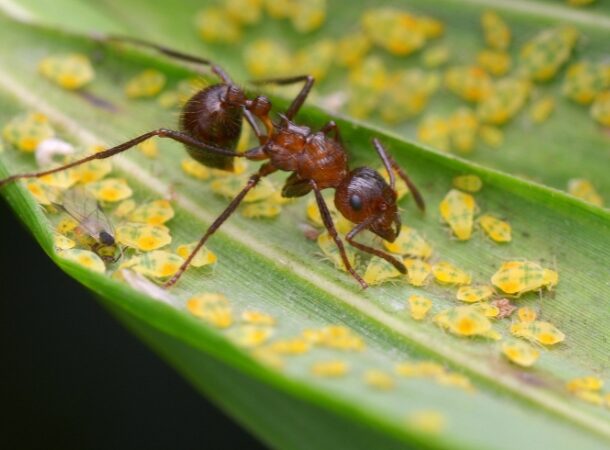 https://extensionentomology.tamu.edu/insect/red-ant/#:~:text=Worker%20ants%20can%20bite%20and,and%20may%20be%20medically%20serious
https://extensionentomology.tamu.edu/insect/red-ant/#:~:text=Worker%20ants%20can%20bite%20and,and%20may%20be%20medically%20serious The Harvester Ant also scores a 3 on the Schmidt Pain Index and its sting is about 20 times as potent as a honeybee’s sting.
The venom from the Harvester Ant sting can last for nearly a week. The searing pain is followed by swelling, tenderness, and periodic itching. Due to the length that the venom stays in the body, it can become a serious medical problem if not treated quickly and properly.
Red Paper Wasp
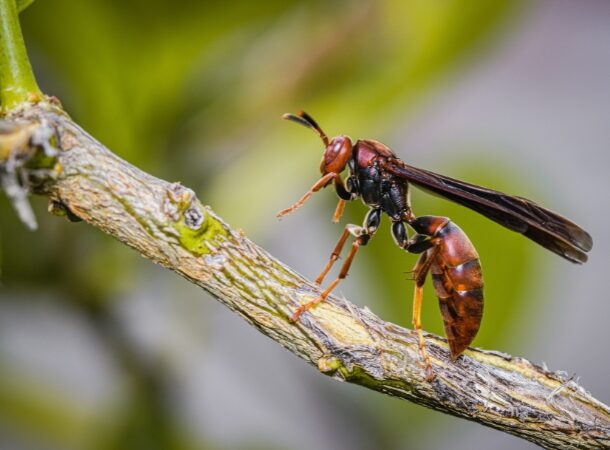 https://entnemdept.ufl.edu/creatures/MISC/WASPS/Polistes_carolina.htm
https://entnemdept.ufl.edu/creatures/MISC/WASPS/Polistes_carolina.htm The Red Paper Wasp is quite common in North America and often build their nests on structures and homes, often near people. They will usually only sting you if they believe their nest is threatened but when they do sting they sting multiple times and the sting is quite painful. The Red Paper Wasp scores a 3 on the Pain Index Scale and its sting is described as “caustic and burning, like spilling a beaker of hydrochloric acid on a paper cut.”
Wow, that sounds like fun. In fact, the pain persists for upwards of ten minutes before any relief will come.
The Velvet Ant
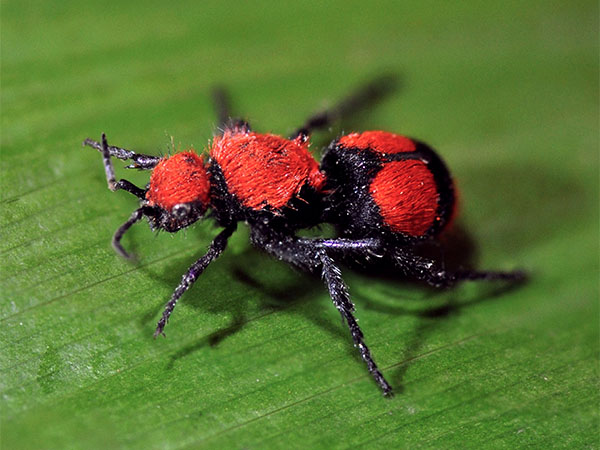 https://www.nhm.ac.uk/discover/velvet-ants-flamboyant-and-fuzzy-with-extreme-ppe.html#:~:text=A%20velvet%20ant's%20defensive%20sting,vary%20depending%20on%20the%20species
https://www.nhm.ac.uk/discover/velvet-ants-flamboyant-and-fuzzy-with-extreme-ppe.html#:~:text=A%20velvet%20ant's%20defensive%20sting,vary%20depending%20on%20the%20species The Velvet Ant’s stinger is nearly half the length of its body, so it’s nice to know that these ants are relatively docile unless attacked or picked up. When someone or something does happen to bother the Velvet Ant they’re in for a bad time, because the Velvet Ant scores a 3 on the Schmidt Pain Index. If you were to be stung by this ant you would feel the ongoing pain from it for nearly half an hour.
The Velvet Ant gets its name from the reddish fuzz that it has on its body indicating to other animals that it’s venomous and shouldn’t be bothered. So hey, at least it lets you know ahead of time.
Warrior Wasp
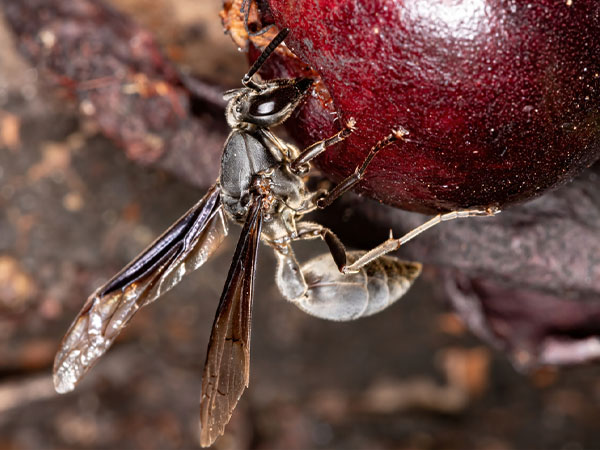 https://nedhardy.com/2020/12/23/how-painful-is-a-warrior-wasp-sting/
https://nedhardy.com/2020/12/23/how-painful-is-a-warrior-wasp-sting/ The Warrior Wasp marks the beginning of the cream of the crop when it comes to pain. From here on out we’re only looking at the most painful stings. The warrior wasp scores a 4 on the Schmidt Pain Index. Justin Schmidt describes the pain as “torture” and “as if you are chained in the flow of an active volcano”.
The initial sting creates an immediate welt and as the pain sets in it’s said to feel like an electrical current going through your body.
What’s worse is the Warrior Wasp is very aggressive and very territorial so if you come across one you may be in for a world of hurt.
Tarantula Hawk Wasp
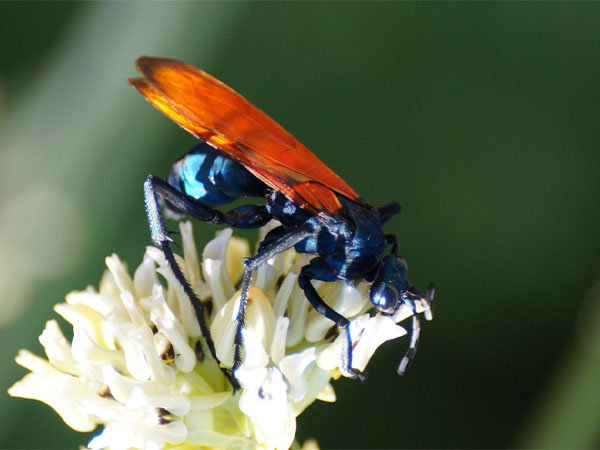 https://www.nhm.ac.uk/discover/the-most-painful-wasp-sting-in-the-world-explained.html#:~:text=The%20tarantula%20hawk%20earned%20a,that%20of%20a%20velvet%20ant
https://www.nhm.ac.uk/discover/the-most-painful-wasp-sting-in-the-world-explained.html#:~:text=The%20tarantula%20hawk%20earned%20a,that%20of%20a%20velvet%20ant The Tarantula Hawk Wasp earns 4 points on the Schmidt Pain Index so it’s for sure a nasty one. Schmidt described the pain as “instantaneous, electrifying and totally debilitating,” saying that the only reaction people have to being stung is to simply lie down and scream.
Thankfully, mercifully, the Tarantula Hawk Wasp is relatively docile and usually only attacks when provoked. They usually just attack tarantulas, that’s how they got the name, they inject a venom with their stingers that paralyzes tarantulas, then lay eggs in the tarantula’s still living body.
These are only found somewhere tropical and far away right? What’s that? Oh, they’re in the southern United States and the rest of the Americas. Cool, I’m moving to the North Pole.
Bullet Ant
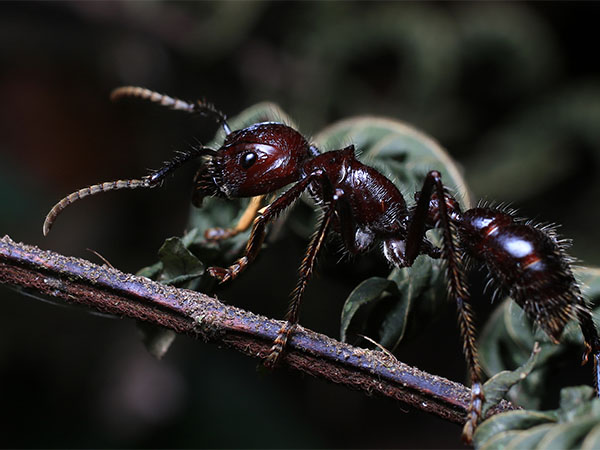 https://animals.howstuffworks.com/insects/which-insect-inflicts-most-painful-bite.htm
https://animals.howstuffworks.com/insects/which-insect-inflicts-most-painful-bite.htm Boy oh boy, is this thing terrifying. The Bullet Ant is aptly named because its sting results in a drilling-like pain that is often compared to, you guessed it, getting shot with a gun. Many other insects rate much lower on the Schmidt Pain Index but the Bullet Ant manages to score a 4+ on the Pain Index Scale.
Schmidt describes the pain as “Pure, intense, brilliant pain. Like walking over flaming charcoal with a 3-inch nail in your heel.”
These ants live in massive ant colonies with upwards of 3,000 ants. And fun fact, when one ant stings you it sends a message to other ants to also sting you, so you deal with one of them, you deal with all 3,000 of them. Let’s just be glad these things are only native to rainforests in Central and South America. And if you live near one of those, we’re so sorry.



























